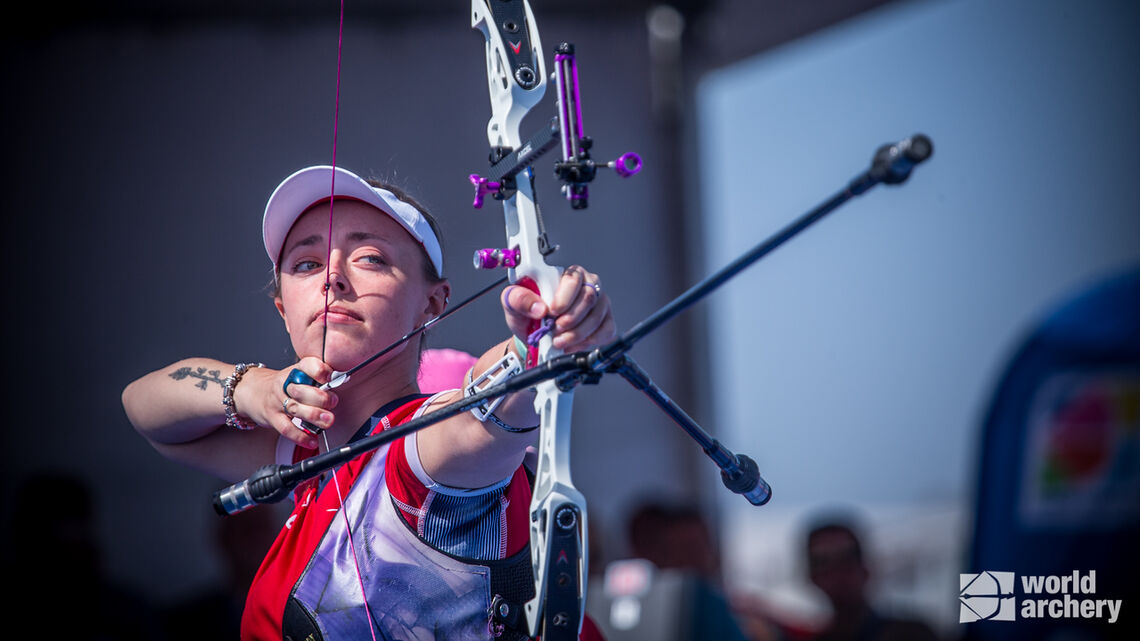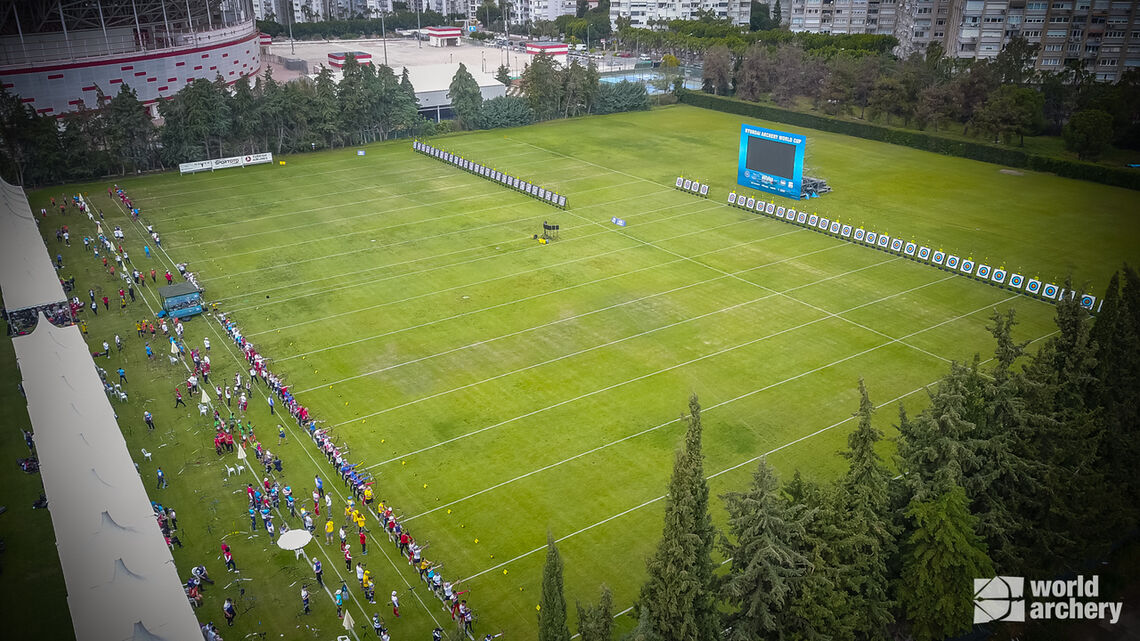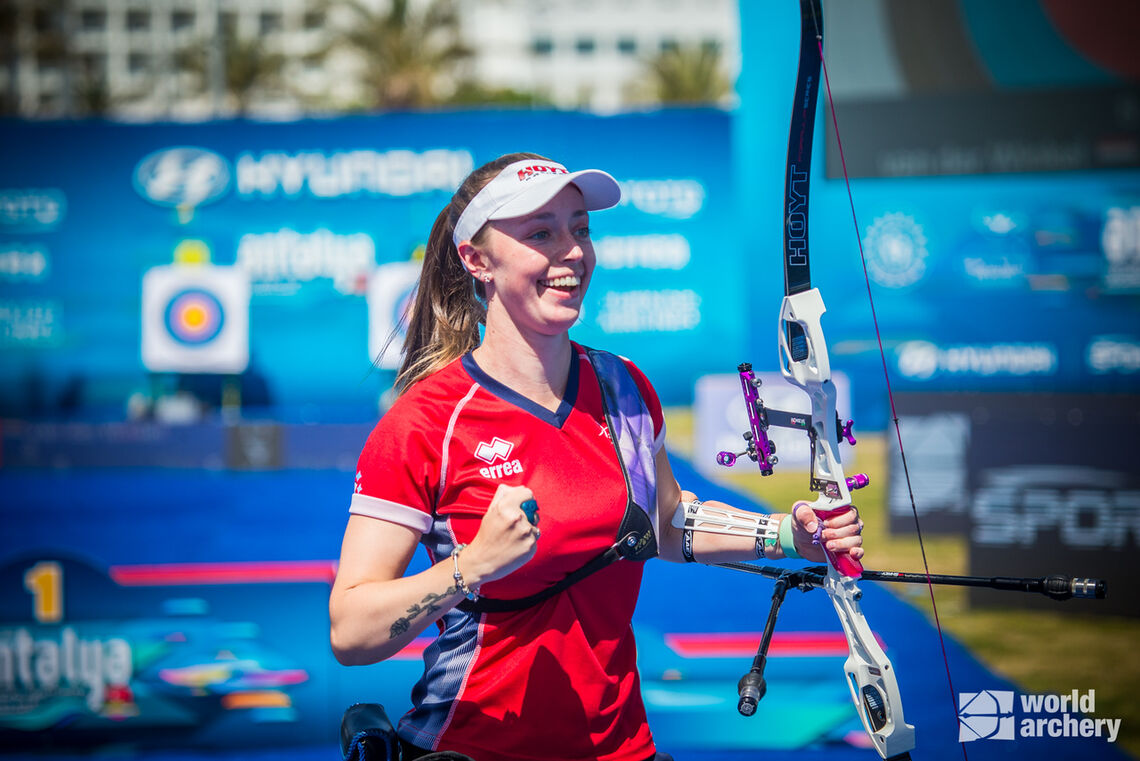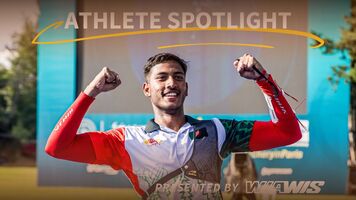Nicky Hunt: Pitman proves why it’s critical to train for the arena

Nicky Hunt is a former world number one who currently acts as the live broadcast analyst for World Archery.
Shooting in the finals venue at a stage of the Hyundai Archery World Cup is an incredible experience – and a new one for some of the archers who made the final four at the most recent stage in Antalya. Among them was Bryony Pitman, Great Britain’s first recurve archer to win a stage of the tour since the late Simon Terry in 2009.
Elevated on a stage, photographer’s shutter lenses clicking, television cameras surrounding you, the crowd cheering and a big screen in your peripheral vision, playing your own movements right back at you with just a moment’s delay. (It can be super distracting.)
All eyes are on you, every shot. There’s prize money – and the chance of winning a ticket to the Hyundai Archery World Cup Final. Pride… there’s just a lot going on.
It’s ultimately a very different place from the qualification round, which is more similar to what most archers experience as they rise through the ranks at national events. All archers shooting together – safety in numbers, something like the ‘herd effect’. No one’s really standing out except the names at the top of the rolling leaderboard.
You can hide.

There’s nowhere to hide in the arena.
And there were moments during the finals in Antalya where you could see the nerves affect Bryony and force some wild arrows. The six in the first set handed her opponent, Laura van der Winkel, an early lead. The beauty of the set system for recurves, however, is that it’s probably easier to reset yourself and fight back. It’s important.
Nobody is ever shooting perfectly – never dropping a point, ever. We’re all human and sometimes things don’t go to plan. But the game is about keeping your head in these moments, letting them go completely and being able to get back straight into the match.
Bryony managed it. She followed up that six with three 10s in the second set, two landing in the smaller X-ring.
There was another wobble in the third set, when she shot another blue – this time a five. But then, when she needed it most, Bryony produced another excellent volley, dropping just one point in the last set to push the match to a tiebreak and, ultimately, the win.
“I was just trying to shoot a good shot,” she said in her post-match interview. “I know after the last set I had been putting in some really good shots and they were going in the middle so it was just a case of knowing that the door was open and knowing that I just needed to shoot a good shot and hope for the best.”
Preparing for the finals arena isn’t easy. But it is essential.
Trying to recreate the type and amount of pressure an archer will experience is very difficult because the rewards – or consequences – of an archer’s actions in practice just can’t match the same level. Distraction training can help, and this can be anything from noises or visual diversions. For an archer, it’s all about trying to stick to the process.
The world’s best will have a mental programme. Many top Asian archers call it ‘confidence’ – but it’s a little more complicated than that.
It’s knowing what and being absolutely committed to thinking certain things at each point of the shot process. This frees the body up to do what it knows – what they’ve been training for, without the conscious mind getting in the way. Once an archer has a solid technical foundation, it’s this that makes the difference.
Building ‘confidence’ is largely done through pressure training, which is intentionally increasing exposure to stress factors. What makes an archer anxious or excited will vary from athlete to athlete but there are plenty of options. Increasing distance, decreasing target face size or time allowed to shoot, or score simulating are all good places to start.
World Archery published a list of training exercises a while back. All increase stress factors.

The more an archer can ingrain their shot process despite external stresses, the more they will be able to deliver when put into any stressful situation – even one they’re not able to absolutely prepare for.
It’s true that in most sports, we often see the same athletes at the top.
Often, it’s because these athletes have mastered what it takes to perform under pressure. That doesn’t mean that they’re not nervous. Quite the opposite – when they are nervous, they allow their bodies to perform as they have trained them to do, rather than breaking down… crumbling, even.
No archer will feel no nerves with a big win on the line.
Bryony’s now felt those nerves in real life. And sure, she’s let them beat her – for an arrow here or there – but she’s come back strong and, ultimately, she did enough to come out on top in Antalya. It’s a powerful experience because, unlike so many others who are aiming to be where she is now, holding a ticket to Tlaxcala, she’s no longer training for the arena.
She’s training to get back to the arena.











